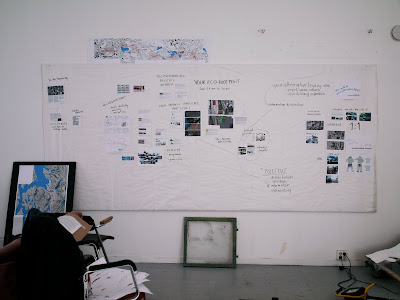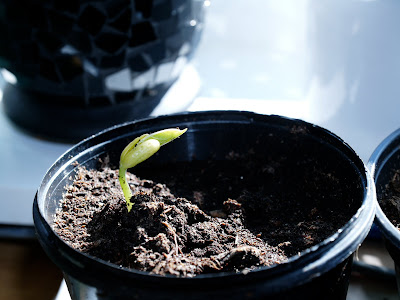As part of the 1:1 sketching (that can be a helpful tool in investigating sizes, shapes, flow, continuity or trying to find out something you are not shure of yet), I wanted to visualize the size of
the ideal eco-footprint vs the eco-footprint of the average Norwegian... (
test your eco-footprint). But the sizes became a little large to manage, so the second best choice is to look at the diet part of the footprint issue. Based on
the potato diet me and my wonderful helpers Ragnhild and Stine B went out Friday morning with the intention to do some serious urban agriculture action at Wergeland/Minde!
Here follows the recipe (if you would ever want to do it your self sometime);
In advance it is Ok to find a suitable setting for a potato garden. A roadside can work just perfectly. (clic on the images to enlarge)

This is needed to cover 284m2 which is the amount needed to produce enough calories for one very active person, for one year;
:: 10 bags (5kg) of potatoes is needed
:: an amount of chicken/cow shit, or any other (organic) nutrient.
:: time
tools: spade, gloves, uniform, energy and good spirit (to manage all the comments and questions that will arise while setting the potatoes), and signs to put up along your potato field to prevent the city gardeners cut down the potato plants like grass...

Leave the potatoes out in daylight for a few weeks prior to setting them out in the soil, so they can start the growing process.

On your chosen site; dig long canals to put the potatoes in (or just holes), 30 cm between each potato, 3 cm deep, remember putting some nutrient in the hole and cover them with approx 8 cm soil.
And now we wait for the potatoes to start growing. Exiting!








During the growing period it is good to return to the site and cover the roots of the plants (with anything organic), this is to prevent the potatoes growing close to the surface to turn green. Green potatoes is toxic, especially for young children. Hutting (covering) the "root" of the potato plant also gives better veggies.
Waiting, waiting, waiting....














































our+alternative+legacy-01.png)
